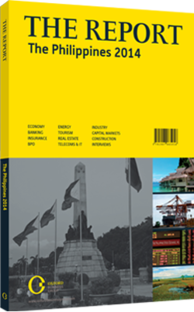OBG talks to Ramon Ang, President and COO, Philippine Airlines

Interview: Ramon Ang
How does air transport infrastructure in the Philippines compare to that in other countries around the region? What areas do you think are in most need of investment?
RAMON ANG: According to the World Economic Forum’s Global Competitiveness Report, which was released in April 2013, infrastructure in the Philippines is among the poorest in the developing world.
In terms of the quality of air transportation, the Philippines ranks 112th – the lowest position among the original five members of ASEAN. The country’s ranking is well behind Malaysia, which placed 24th, Thailand (33rd), Indonesia (89th) and Vietnam (94th).
In order just to catch up with its ASEAN neighbours, our country needs to spend the equivalent of 5% of GDP – or approximately P500bn ($12.05bn) – annually on infrastructure.
At present, the government allocates only around 2% of GDP toward infrastructure, so it is clear that much more needs to be done.
How can the country resolve the air safety ban that was imposed on its carriers?
ANG: The Civil Aviation Authority of the Philippines (CAAP) has recently made some major strides in restoring the country to the good graces of international aviation safety agencies. On March 4, 2013, the International Civil Aviation Organisation removed the Philippines from its list of nations with “significant safety concerns”.
The EU followed suit on July 10, 2013 by lifting the ban on Philippine Airlines’ operations to and from the 28-member bloc. In arriving at its decision, the EU cited the “improved safety oversight provided by the competent authorities of the Philippines and the ability to ensure effective compliance with relevant aviation safety regulations”.
The CAAP is currently working hard to try to convince the US Federal Aviation Administration (FAA) to upgrade the Philippines’ rating to Category 1. Philippine Airlines expects a decision from the FAA on this before the end of 2013.
What adjustments to civil aviation regulations for local carriers can maximise competitiveness?
ANG: The Philippine aviation market is one of the most competitive in Asia, with eight players in the domestic market and more than 20 participants in the various international routes to or from the country. These markets are already well served by the current free market regulations.
Will competition in the international market evolve as low-cost carriers expand regionally?
ANG: Competition will no doubt intensify in the sectors where low-cost carriers operate. Nonetheless, the market is sufficiently diverse to accommodate all players and we believe there is a strong preference for a flexible full-service carrier, such as Philippine Airlines, that offers the features of a low-cost business model and a legacy carrier.
How would the lifting of the EU ban shift the competitive landscape for local carriers?
ANG: Philippine Airlines is uniquely positioned to offer a non-stop service from Manila to European capitals, which is a product that none of our present competitors can offer. For business travellers especially, our product is most advantageous as it shaves several hours from itineraries that involve one or two stops on the way to Europe.
How do you expect the prospects for increased direct long-haul flights to Europe to evolve?
ANG: We launched direct non-stop flights to London in November 2013. I think the prospects are good for more direct flights to other European cities. After all, Philippine Airlines has an advantage in that it is the only carrier offering such direct flights from Manila to Europe, cutting flying time significantly.
You have reached the limit of premium articles you can view for free.
Choose from the options below to purchase print or digital editions of our Reports. You can also purchase a website subscription giving you unlimited access to all of our Reports online for 12 months.
If you have already purchased this Report or have a website subscription, please login to continue.

